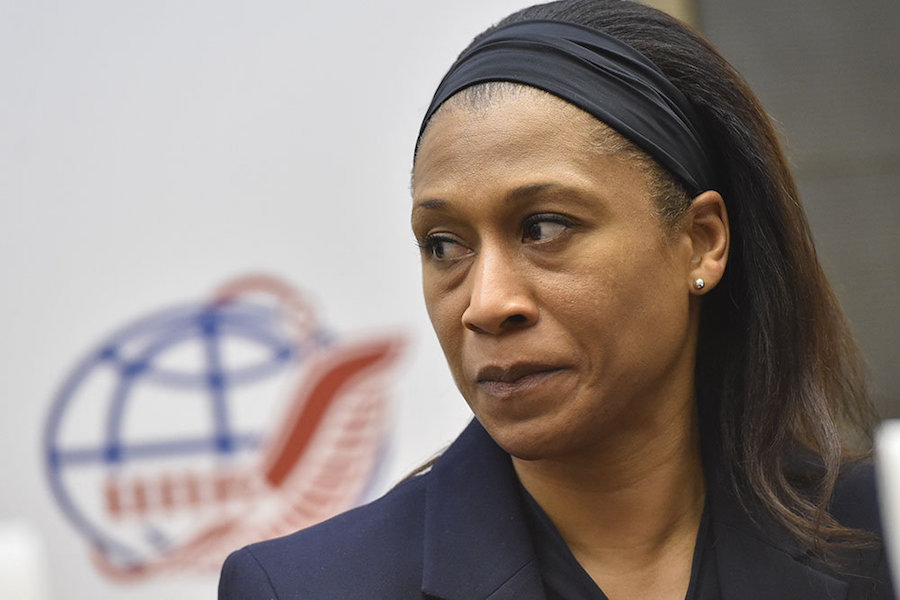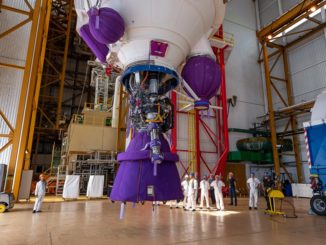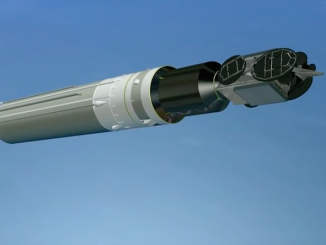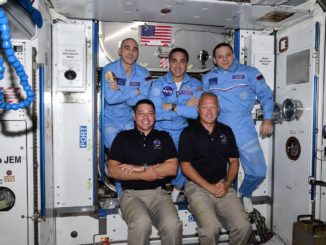EDITOR’S NOTE: Updated Aug. 28 with details and CFT schedule.

Boeing said Tuesday it is “making excellent progress” toward launching a second unpiloted test flight of its Starliner crew capsule to the International Space Station by the end of this year or in early January, setting the stage for the first Starliner demonstration mission with astronauts in mid-2021.
The upcoming test flight is the second launch of a Starliner capsule into orbit after a first Orbital Flight Test was cut short in December 2019 due to a software error that caused the spacecraft to consume too much propellant soon after arriving in orbit. The higher-than-expected fuel usage prevented the Starliner spacecraft from docking with the International Space Station.
Ground teams uncovered another software coding error that could have caused the spacecraft’s service module to collide with the crew module after the two elements separated just before re-entry. During certain parts of the mission, there were also difficulties establishing a stable communications link between the Starliner spacecraft and NASA’s network of tracking and data relay satellites
The Starliner capsule safely landed in New Mexico despite the issues encountered on the first Orbital Flight Test last year.
Working under contract with NASA, Boeing is preparing for a second unpiloted Starliner test flight to validate corrections to the spacecraft’s software and prove out the ship’s ability to dock with the station. Officials decided to add a second unpiloted test flight earlier this year before moving on to the Starliner’s Crew Flight Test, which will carry Boeing astronaut Chris Ferguson and NASA astronauts Mike Fincke and Nicole Mann to the space station.
Boeing and NASA officials aimed to launch the Crew Flight Test by mid-2020 if the Starliner spacecraft completed a successful Orbital Flight Test in December 2019. In a statement Tuesday, Boeing said the Crew Flight Test is now expected in the summer of 2021.
“We are making excellent progress toward launching our second uncrewed flight test, Orbital Flight Test-2, by the end of this year or in early January, pending the completion of upcoming milestones on both the software development and test hardware production efforts,” Boeing said Tuesday. “After a successful OFT-2, Boeing and NASA will fly Starliner’s first crewed mission, the Crew Flight Test, in the summer of 2021, with the first post-certification mission, Starliner-1, tentatively scheduled for the following winter.”
NASA confirmed Friday that Boeing is targeting no earlier than December for the OFT-2 mission, followed by the launch of the Crew Flight Test no earlier than June 2021, and the first post-certification mission no earlier than December 2021.
Industry sources previously said NASA and Boeing managers have recently discussed possible launch dates in December or early January for the OFT-2 mission.
NASA said in a statement Friday that the no earlier than December target for the OFT-2 launch is “pending hardware readiness, flight software qualification, and launch vehicle and space station manifest priorities.”
The Starliner spacecraft is designed to lift off on top of United Launch Alliance Atlas 5 rockets. At the end of each mission, the Starliner returns to Earth under parachutes for an airbag-cushioned landing in the Western United States.
Boeing plans to fly the reusable capsule again on the Crew Flight Test with Ferguson, Fincke and Mann, while a different spaceship is assigned to the OFT-2 mission.
Boeing plans to rotate between two reusable crew modules for all planned Starliner missions. Each flight will use a new service module, which provides propulsion and power generation capacity for the spacecraft.
NASA said Boeing engineers at the Kennedy Space Center in Florida are “well into the final assembly of the crew and service modules” for the unpiloted OFT-2 mission.
Boeing has modified the design of the Starliner docking system to add a re-entry cover for additional protection during the capsule’s fiery descent through the atmosphere. Teams have also installed the OFT-2 spacecraft’s propellant heater, thermal protection tiles, and the airbags used to cushion the capsule’s landing. The crew module for the OFT-2 mission recently began acceptance testing, which is designed to validate the ship’s systems before it is mated with its service module, according to NASA.

Boeing’s software engineers in Houston are in the “final stages” of modifying and re-verifying software code from the Starliner’s first uncrewed test flight.
“As part of that effort, the team recently began a major milestone called Formal Qualification Testing, which is a comprehensive test of flight software and an important step in preparing for an end-to-end mission rehearsal test.”
The end-to-end rehearsal was not performed to verify software code before the OFT-1 mission. An independent NASA-Boeing review team issued 80 recommendations aimed at providing more thorough software testing, process improvements, and some hardware changes.
The investigators also recommended NASA officials improve their oversight of Boeing’s Starliner team.
NASA said Friday almost 75 percent of the 80 recommendations have been implemented. Boeing has committed to “comprehensively implement” all of the review team’s recommendations.
Meanwhile, Boeing teams continue refurbishing the crew module from the OFT-1 mission for the Crew Flight Test.
“After removing and conducting checkouts on various systems and flight hardware, Boeing is preparing to reassemble the vehicle for flight,” NASA said of the crew module for the CFT mission. “Soon, outfitting of the crew module’s interior will begin along with packing parachutes and airbags ahead of installation.”
The CFT capsule’s docking system has been modified to accommodate the new re-entry cover that will debut on the OFT-2 test flight, NASA said.
Assuming the OFT-2 and Crew Flight Test missions go well, NASA will certify the Starliner spacecraft to begin regular crew rotation flights to the space station.
NASA astronauts Suni Williams and Josh Cassada were assigned to the first “post-certification” Starliner flight in 2018. NASA announced Tuesday that astronaut Jeanette Epps will join Williams and Cassada on the mission.

The mission will be the third spaceflight for Williams, and the first for Cassada and Epps, who were selected for NASA’s astronaut corps in 2013 and 2009, respectively. Epps will become the first Black woman to be part of a long-term space station crew.
A fourth crew member — likely from one of NASA’s international partners — is expected to be assigned to the Williams-led Starliner crew.
“The Boeing team is honored that NASA assigned astronaut Dr. Jeanette Epps to the crew of Starliner-1, Boeing’s first operational mission to the International Space Station,” Boeing said in a statement. “Jeanette will be a part of an important and history-making flight, and we’re excited to welcome her to the Starliner team. Jeanette’s crewmates, Suni Williams and Josh Cassada, are regulars at our Florida facilities and are training in Houston. We’re looking forward to getting to know her just as well as we progress toward this flight.”
While astronauts train for future Starliner missions, Boeing and NASA engineers are working to address 80 recommendations issued by an independent review team charged to probe software issues, a communications problem, and management oversight shortfalls in oversight that contributed to the problems on last year’s test flight.
NASA in 2014 selected Boeing and SpaceX to develop and fly commercial crew capsules, awarding multibillion-dollar contracts to each company for the Starliner and Crew Dragon spacecraft. Employing a new public-private partnership contracting scheme, the commercial crew program was established to end U.S. reliance on Russian Soyuz crew ferry ships after the retirement of the space shuttle in 2011.
SpaceX won a $2.6 billion contract to build, test and fly the Crew Dragon spacecraft, and the Elon Musk-led company completed its first Crew Dragon test flight with astronauts Aug. 2, capping a 64-day mission to the space station with NASA space fliers Doug Hurley and Bob Behnken.
NASA plans to formally certify the Crew Dragon spacecraft in the coming weeks, ahead of the first “post-certification” Crew Dragon launch in October with a four-person crew to kick off a long-duration, six-month expedition on the space station.
But Boeing, which received a $4.2 billion NASA contract in 2014, has fallen behind SpaceX in the commercial crew program. NASA wants both companies to provide regular crew transportation services to and from the space station, giving the space agency two independent U.S.-owned systems to deliver astronauts to low Earth orbit for the first time.
Email the author.
Follow Stephen Clark on Twitter: @StephenClark1.



